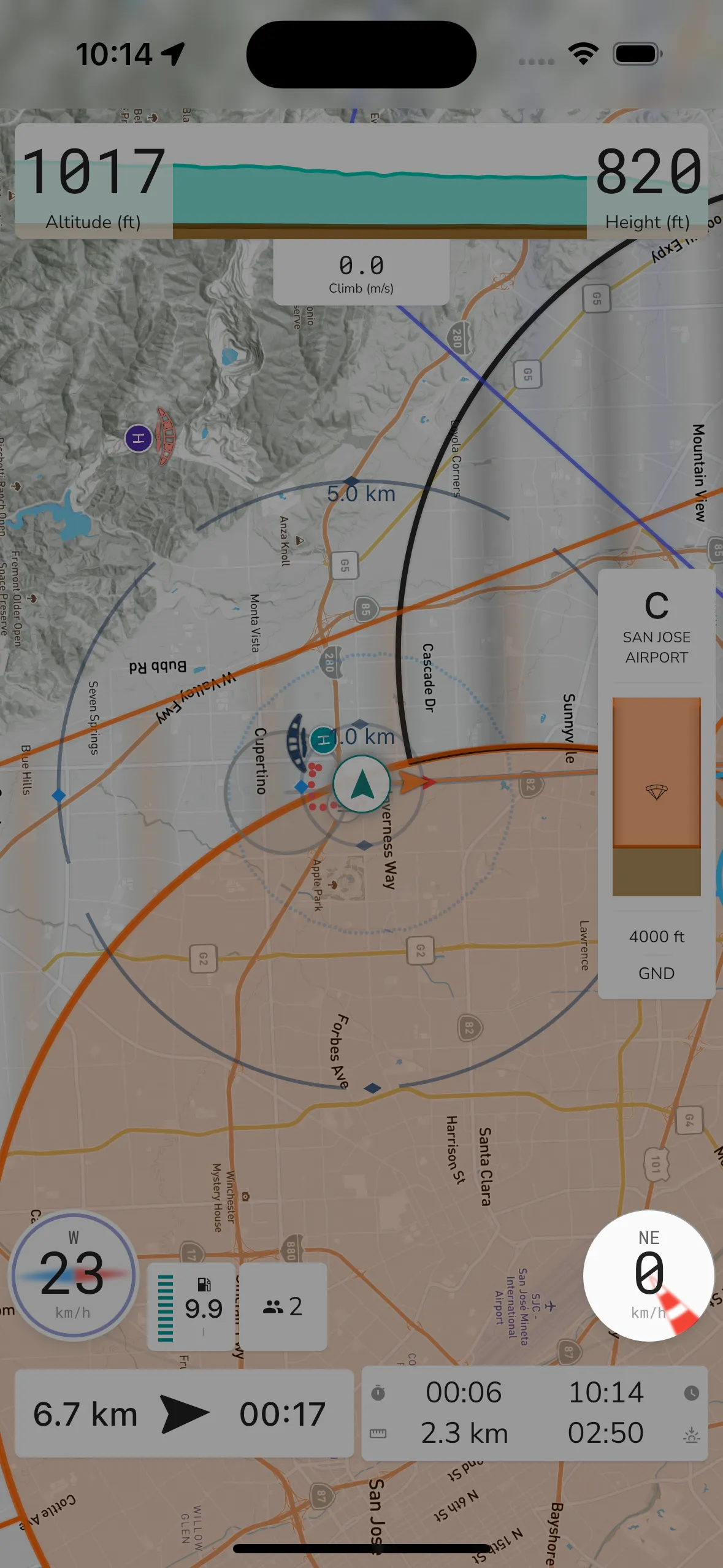Gaggle has a wind speed widget that will you show the current wind speed and direction. The widget displays the current speed and above that the direction that the wind is coming from.

Behind the wind speed is a visual indicator of the wind direction. This indicator will orientate itself based on your compass when on the ground, and it will orientate itself based on your direction of travel while flying. When flying directly into wind, the indicator will turn from red to green, indicating the ideal landing direction. Note: In strong wind conditions this can be incorrect due to your direction of travel being impacted based on the wind speed and crabbing. For this reason you should only use the Gaggle wind speed indicator as a guideline, and you should always rely on other wind direction signals in your physical environment as well to determine the real wind conditions.
How wind speed is calculated: If you have an active subscription then your wind speed and direction will start with values obtained from weather services. As you start flying, Gaggle will start capturing your ground speed data as you travel in various directions. Using this ground speed data, a wind rose will start to show behind the widget in a light blue color. The more recent the ground speed data for a direction of travel, the more intense the blue color will be. As the data becomes stale, it will turn grey to show you how confident Gaggle is with the data for a specific direction. About 2 minutes worth of data is stored for each direction of travel. Once Gaggle has enough data for every direction of travel it will then start using the wind rose data to determine wind speed and direction. The direction that you are traveling the slowest in is subtracted from the direction you are traveling the fastest in to then display the wind speed and your fastest direction of travel is used as the wind direction. The most recently speed data sampled is weighted more than older data when doing the calculations so doing 2 gentle 360 degree turns is usually enough to get a decent wind reading.